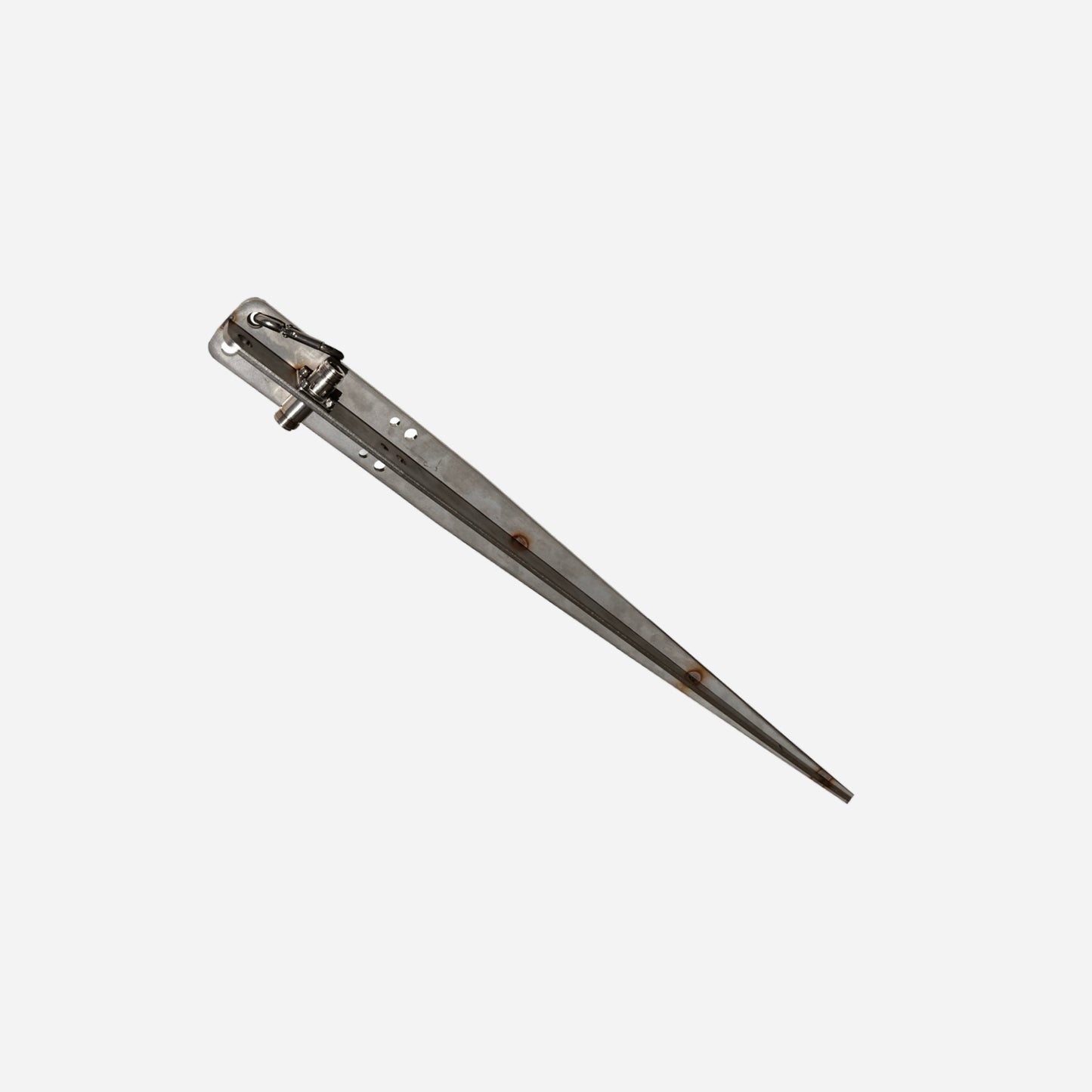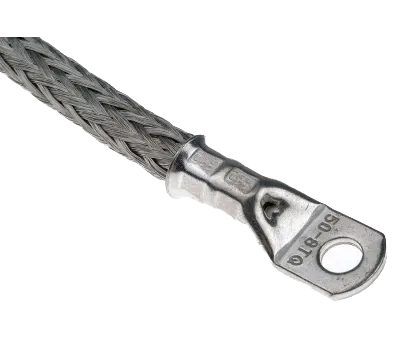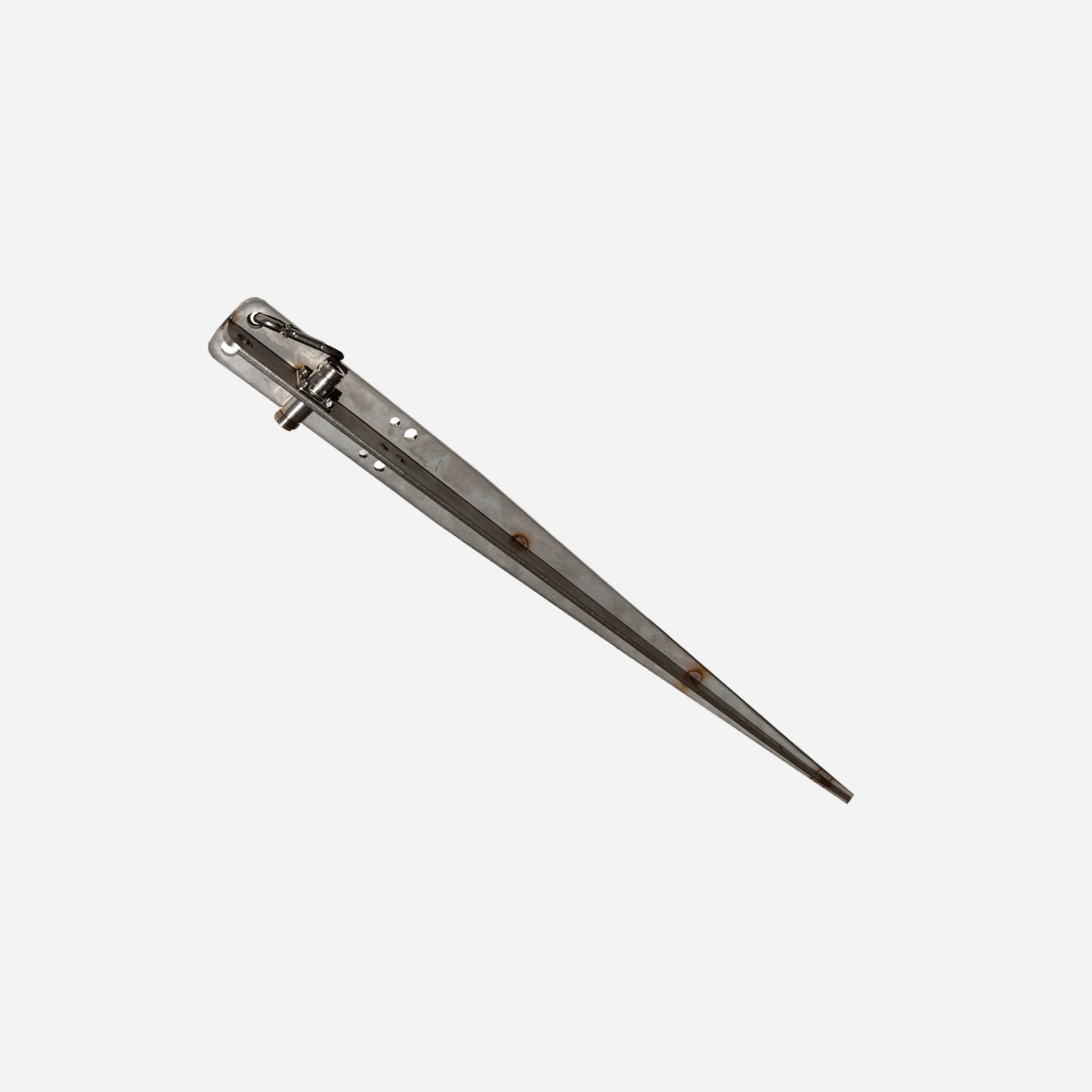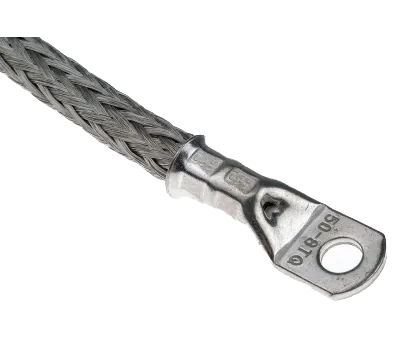RF Guru
Multi Use RVS INOX RF Ground Stake
Multi Use RVS INOX RF Ground Stake
Couldn't load pickup availability
Experience the ultimate versatility with our innovative Ground Stake, designed to cater to a wide range of applications. From ensuring a solid ground for your feedlines at the antenna to safeguarding your shack's connection and a rock-solid guy stake for antennas, this all-in-one solution has got you covered. Elevate your grounding game with our Multi-Purpose Ground Stake – the one-stop solution for all your grounding needs. Secure, adaptable, and designed to last, it's a must-have addition to your setup.
Function
- Grounding Excellence: The Ground Stake functions flawlessly as both a grounding tool for your feedlines and a rock-solid guy stake for antennas. Say goodbye to interference issues, as it guarantees a stable connection, regardless of the weather.
- Universal Connectivity: Our Ground Stake's bulkhead is equipped with a female N to N connector. Need different connections? No problem. We offer adapters for PL, F, and BNC connectors, ensuring compatibility for various setups.
- Permanent Installation Option: If you're looking to create a lasting concrete installation, you'll find two dedicated holes included, ready for threaded rod insertion.
- Interconnection: Multiple holes are strategically placed for easy attachment of grounding straps, allowing seamless interconnection. Maximize its potential by linking it to your house's grounding system, creating an enhanced equipotential bond.
- Optional Copper Ground Strap: You have the choice to include an optional tinned copper ground strap, measuring 50cm in length and featuring an M8 connection. This braided strap boasts a substantial cross-sectional area of 36.19mm², perfect for interconnecting components or connecting to your household's grounding system.
Built to Last: Crafted for durability with INOX/RVS316, this Stake is a long-term solution.
Mechanical Characteristics
- Built to last ! INOX/RVS/Stainless steel 316 with a thickness of 4mm, designed for durability in wet and salty environments.
- The plate's dimensions are 69cm in length and 4.3cm in width on the top side.
- The holes for optional concrete installation have diameters of 4mm and 8mm.
Options
- If you choose 1 or 2 adapters, the Stake will be equipped with an N-N bulkhead complete with 4 bolts and 4 locknuts, the 2nd adapter is N-X.
- Opting for the braided strap includes a stainless steel bolt, locknut, lock washer, and washer.
Yes, an RVS (stainless steel) ground stake can still play a role in the RF path even though its conductivity is poor compared to copper. When used alongside a copper ground stake (e.g., near the shack entrance), the combination can still contribute effectively to grounding and RF management, provided it is done properly.
How RVS and Copper Ground Stakes Work Together in the RF Path
1. Primary Role of Ground Stakes in RF Systems:
Ground stakes provide a low-impedance path to dissipate RF currents, improve antenna performance (especially for vertical antennas), and reduce common-mode currents or noise entering your shack.
2. Impact of Stainless Steel (RVS) Ground Stakes:
• High Resistivity: RVS has about 2–3% conductivity compared to copper, which increases its resistive losses. However, its large surface area and contact with the earth still allow it to contribute to RF grounding.
• Surface Effect (Skin Effect): At RF frequencies, current primarily flows along the surface of conductors. The interface between the RVS stake and the ground will still allow some RF energy to dissipate into the earth.
3. Copper Ground Stake Near the Shack:
• A copper stake near the shack entrance, being far more conductive, will provide a lower-impedance path for RF currents compared to the RVS stake.
• This copper ground stake is critical for minimizing RF entering the shack and serves as the primary ground return for equipment.
4. Combined Effect:
By using multiple stakes (RVS and copper) connected properly:
• The RVS ground stake can reduce some of the RF potential at the antenna or transmission line, improving RF dissipation.
• The copper ground stake ensures a highly conductive RF ground closer to your equipment, reducing common-mode currents and RF feedback.
Why RVS Stakes & Combining RVS and Copper Stakes
Avoid Galvanic Corrosion:
- Connecting RVS and copper directly in the presence of moisture (e.g., soil) can lead to galvanic corrosion, where copper accelerates the corrosion of stainless steel.
- Place the RVS and copper ground stakes at least 3–5 meters apart to maximize grounding effectiveness.
- This spacing helps avoid overlapping ground fields and reduces the overall resistance to earth.
Effectiveness of RVS in RF Grounding
- While RVS is less conductive, it can still help with RF grounding because:
- The earth-soil interface dominates grounding performance at RF frequencies, not just the material’s conductivity. (skin-effect)
- A larger surface area of the stake and additional ground radials can improve its performance.
- Combined with a copper stake, the overall grounding system benefits from the low impedance of copper near critical areas (like the shack, tower, mast) and the durability of RVS in corrosive soil conditions.
- Grounding at 1/2 Wavelengths stabilizes the feedline, provides and improves the return path and reduces RF noise.
We recommend using copper grounding at the shack entrance and at the antenna locations (such as masts and towers). Stainless steel (RVS) ground stakes are employed as intermediate RF grounding points along the feedline path to help reduce EMI noise. These are used in combination with common-mode chokes for optimal performance.
For Field Day and expeditions, we recommend using stainless steel (RVS) ground stakes as they are more practical and durable in such temporary setups, whereas copper stakes can be less convenient to handle and transport.
Share



